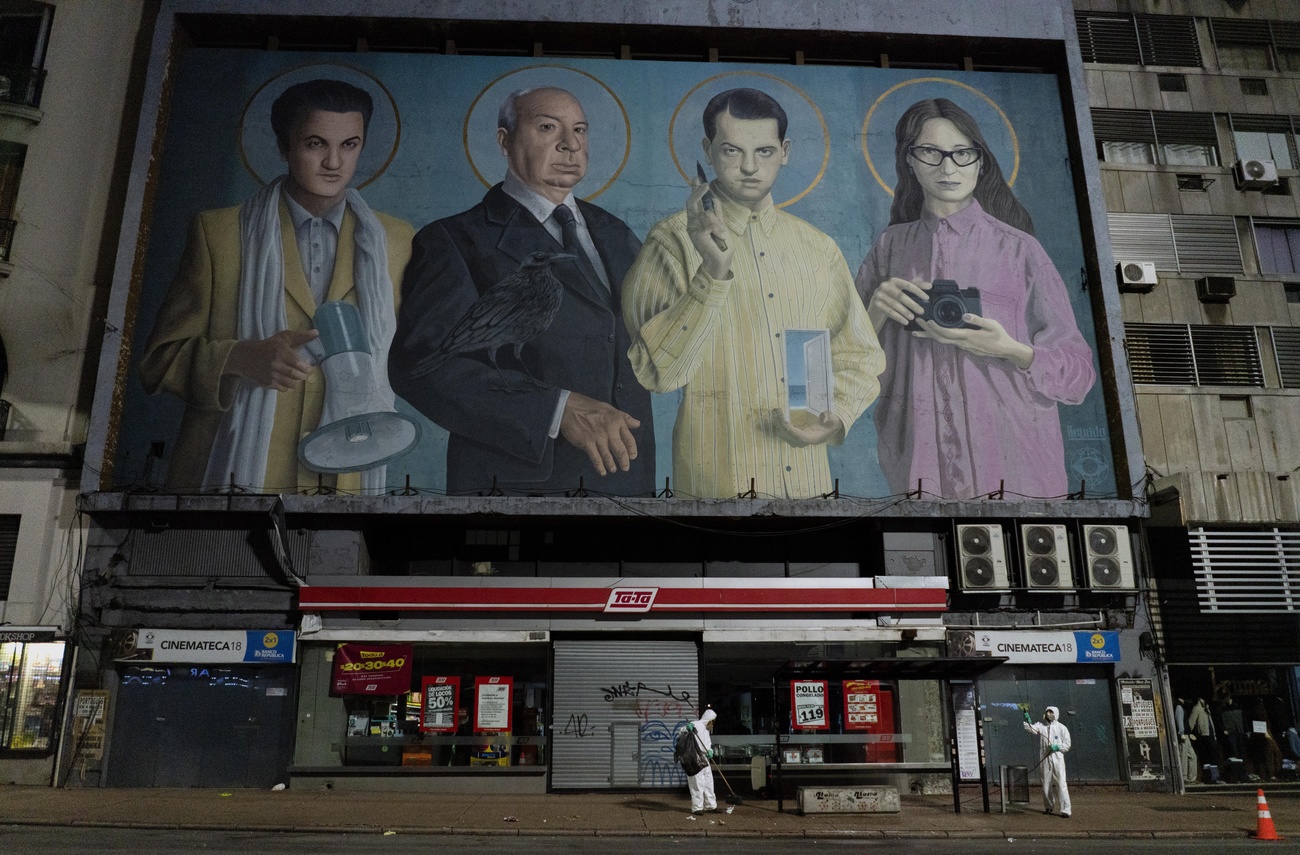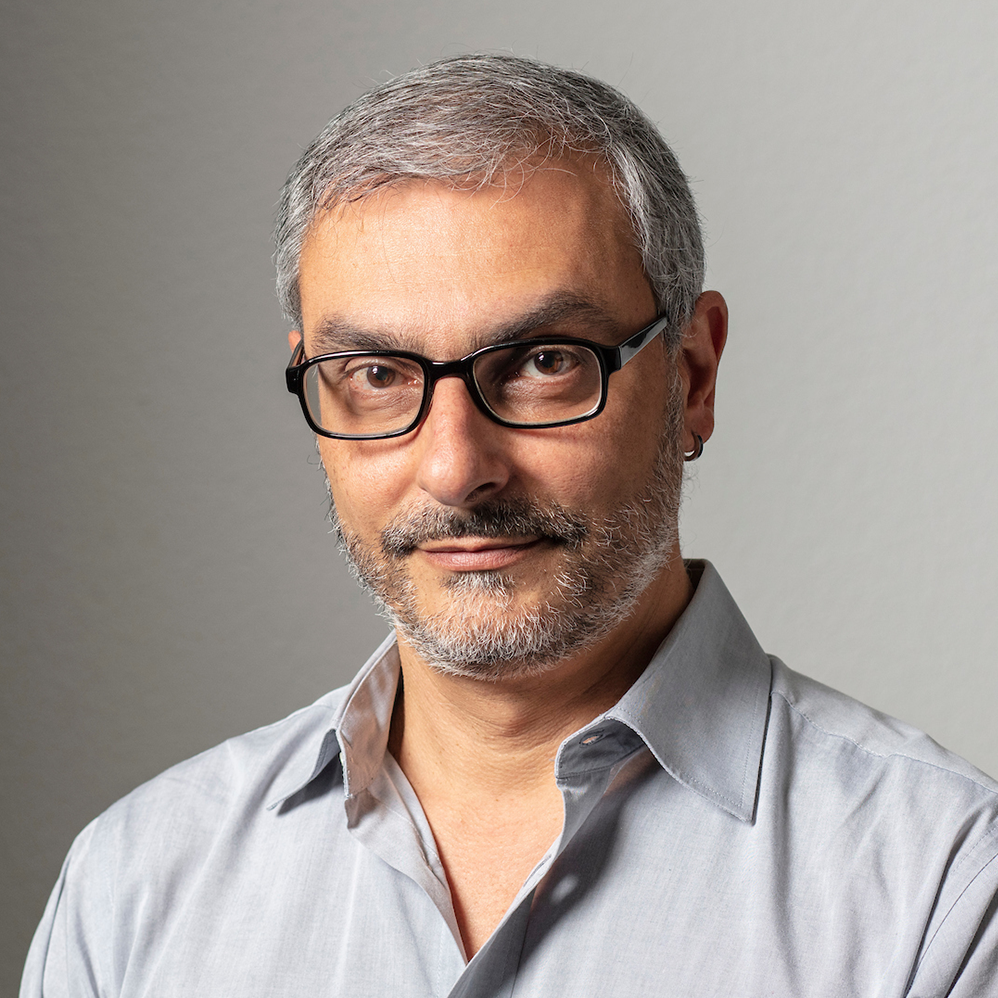Visions du Réel: Lucrecia Martel exposes the fictional traps of non-fiction

Lucrecia Martel was the guest of honour at the 2023 Visions du Réel documentary film festival in Nyon. The Argentinian filmmaker, famous for her fictional work, tells SWI swissinfo.ch that the documentary format represents one of the biggest challenges in her career.
Lucrecia Martel is a woman on a mission. When SWI swissinfo.ch asked her about current and future projects during an interview conducted in the first days of the film festival in Nyon, she was straightforward: “To finish Chocobar External link”.
Martel has been working for over 12 years now on the story of the murder of the Argentinian indigenous leader Javier Chocobar by a white landowner in 2009. This will be her first non-fiction feature, for which she has faced a multi-layered list of hurdles. The film is “very difficult to pigeonhole”, in the words of Martel.
“The process of making this film is different from everything I’ve done so far,” she says. “This one has to do with the historical construction of my country, with a real event. It’s much more difficult to talk about a documentary because it’s precisely the historical documentaries that are at the root of the problem. The more I watch them, the more strongly I feel that history is a very powerful fictional construction, so much so that we don’t perceive it as fiction.”
Born in 1966, Martel became the most broadly acclaimed author filmmaker in Argentina with only four feature (fiction) films and a dozen short-length works to her name. Her first movie, The Swamp (2001), shot her to immediate fame. A family drama set amidst a crumbling, decaying background, the film managed to talk universal themes in a complex domestic and very local set-up. It was followed by The Holy Girl (2004) and The Headless Woman (2008), also set in domestic, intimate quarters in unsettling environs.
It was almost a decade until she released her fourth film. In Zama (2017) she maintained her geographical focus (the Argentinian outback) but traveled back to the colonial 18th century, where she enacts the saga of an unfortunate magistrate, based on the 1956 novel by Argentinian author Antonio di Benedetto.External link
We may try to find clues to Martel’s take on documentary films, and their political dimension, in the way she subverted the “rules of realism” in her fictional works. Her register is undeniably realist, there are absolutely no flights of fancy or dreamscapes in her narratives, but the films are set and played in such absurdist ways that one leaves the theater not knowing exactly where to place the story.
With her distinctive style, Martel has won the admiration of international critics and has succeeded in gaining a loyal audience for her films. She is part of a generation that is probably the most accomplished in the history of Argentinian cinema.

Talking politics without talking politics
Martel’s take on political cinema also stands apart from movies like the recent hit Argentina,1985, a linear, unimaginative reenactment of the thorny process to bring Argentina’s generals to court for crimes committed during the 1976-82 dictatorship. “I don’t do films that denounce crimes, nor have I a political programme to adjust myself to because I don’t belong to any political party.”
This doesn’t mean that Martel doesn’t take into account the political dimension of her films, or of any other movies. “There is always a political element,” she says. “I see cinema as public discourse because there is a wish to share it with a community. I never had the intention to be a success internationally, all I ever wanted was to share what I saw with my neighbours. We can’t change the world, but we can change our closest environs, or bring something new to it. That’s why I understood quite early that cinema, and not political activism, was my way to make a political stand.”
This position materialises in the way Martel frames the colonial behaviours and indigenous issues still present in Argentinian and Latin American societies 200 years after these countries became formally independent from Spain and Portugal.
“In Argentina it’s very difficult to make a film that doesn’t reflect the indigenous population because it is part of our culture, and of any country with a colonial history.”
Martel says that she is particularly sensitive to the indigenous plight also for having been born in Salta, in the north of Argentina, where there is a strong proportion of indigenous people in the local population. The bond with these communities is inescapable, “it’s in our daily life, you cannot occult it”, she says.
“The humiliation, abuse of power, exploitation [of indigenous and enslaved peoples], these are all common characteristics of Latin American culture,” she adds. In her fictional features, Martel always managed to insert indigenous characters whose interaction with the whites reproduce the historical attitudes of oppression in seemingly banal, domestic situations, that in a certain way reflect Martel’s own upbringing.
“I grew up in a large family, in a house with many people,” she says. “It’s very difficult to invent something that escapes from what you’ve lived. Even if I made a Ninja Turtles film, it would represent something I have lived.”
The fury of the sound
In her most recent feature, Zama (2017), white colonial oppression is depicted in trademark Martel style: crudely with subtle touches of dark irony – and not just in the behaviour of colonial officials but also in the music. The sound design of Martel’s films is always a carefully crafted element. “The sound is part of the story even before I start to write it”, she says.
In Zama, the whole soundtrack is taken from the guitar duo Los Índios Tabajaras. The musicians were indeed indigenous from the Brazilian Northeast and became a billboard sensation in the United States, Mexico and Europe in the 1950s and 1960s playing guitar transcriptions of classical pieces and popular Western songs. A typical case of cultural appropriation, but in this case of the oppressed adopting the oppressors’ modes. Martel, however, claims that their indigenous origin was not the main reason why she chose their music.
“I thought it was such a pretentious music; and the big American film industry paid attention to that music at a certain moment,” she says. “It’s a music that wants to be important, and that was fundamental to the film.”
Airs of grandeur is in fact a common trait of colonial officials in Zama, as well as of the ruling classes of post-colonial nations.
Plenty of producers
Even though she never aimed at international recognition, Martel has been feted in the most significant Latin American and European film festivals since the release of The Swamp. She hasn’t yet won a major award in Berlin or Cannes, where her films are always a cinephile event, the kind of film where we know that what we are going to watch goes much beyond the expectations raised by their synopsis.
In 2020, the Locarno Film Festival awarded her a special grant of CHF70,000 ($78,300) from a fund destined to films whose production was interrupted by the Covid pandemic – in this case, Chocobar. This amount may sound like a humble token of appreciation, but Martel values all the support she can get.
In the video below, Martel talks to Lili Hinstin, then artistic director of the Locarno Film Festival, after the announcement of the award:
“In my career we have always managed to finance things without support. Funding from festivals like Locarno is fundamental. State support in Argentina is not enough to make a film,” she says.
In the credits of Zama there is a huge list of associate producers, including Spanish filmmaker Pedro Almodóvar and Mexican actor Gael García Bernal. Martel tells us that the film also had about 40 investors. Sometimes, she says, it’s necessary to bring together a lot of people who are not millionaires to get the job done.
“Someone once said to me, ‘but there are so many producers, there must be a lot of money’,” she recalls. “But it’s the opposite! There are so many because there is not enough money. We, filmmakers from the South, always have to count on funds from festivals and institutions in France, Germany, Holland. We must be very grateful to Europe.”

In compliance with the JTI standards
More: SWI swissinfo.ch certified by the Journalism Trust Initiative










You can find an overview of ongoing debates with our journalists here . Please join us!
If you want to start a conversation about a topic raised in this article or want to report factual errors, email us at english@swissinfo.ch.